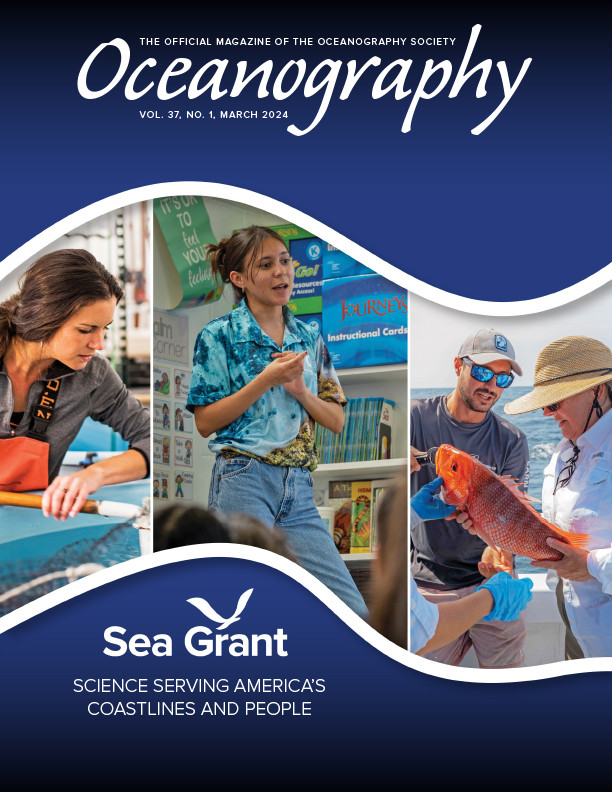Full Text
Communicating about invasive species is a complicated task, and word choice matters. Along with technical terms, metaphors and illustrative language fundamentally underpin effective science communication. The figurative language we use to discuss invasive species can be as important as the technical jargon—in many ways, it shapes stakeholder perceptions as much as scientific fact. Species naming conventions are likewise complex. Some species’ common names reinforce xenophobic concepts or contain racial slurs, complicating attempts at diverse, equitable, and inclusive science communication. Despite these issues, there have been limited national efforts to develop better, more inclusive guidelines for invasive species communication. In this article, we introduce ongoing developments in the rhetoric surrounding invasive species—and how Sea Grant can help change language and public opinion when communicating about biological invasions.
Figurative Language and Invasive Species Communication
Metaphors help scientists describe their work: researchers use analogies to develop hypotheses and interpret experimental results, then use metaphors to communicate their findings. Even fundamental scientific concepts—“cells” (named after rooms of medieval monks), food “chains,” or infectious disease “agents”—are based in figurative language. When used thoughtfully, metaphors help simplify and explain complex issues, but when used carelessly, they can cause errors in reasoning, foster public misunderstandings, and inadvertently reinforce stereotypes and messages that undermine inclusive science goals (Taylor and Dewsbury, 2018).
Two common metaphorical frameworks in invasion biology use military and nativist language to call researchers and the public to action. From references to “the war on invasive carp” to calling for “support for our troops” (in this case, environmental managers), military language is deeply embedded in invasion biology (Larson, 2005). War metaphors have strong emotional appeal to many stakeholders and may help generate political support for species management efforts. However, war metaphors rely on ideas of “good versus evil” and “us versus them,” concepts that falter when applied to invasive species. Invasive organisms can be destructive, but they are not deliberately malicious. Framing invasive species in military terms also erases the reality that human behavior and changing patterns of global trade and travel are largely the factors that drive this conflict (Subramaniam, 2001).
Nativism is another common rhetorical framework that positions nonindigenous species as inherently threatening to native ones. By labeling them “foreign,” the metaphor stirs up instincts to protect our home from dangerous outsiders. Unfortunately, nativist metaphors can come across as xenophobic or outright discriminatory (Herbers et al., 2022). Human immigrants have long been conflated with biological invasions (Simberloff, 2003), and many environmental organizations now advocate for renaming certain species to avoid replicating stigma, such as replacing the term “Asian carp” with “invasive carp.” Nativist rhetoric can even backfire if the language is too harsh: people who might otherwise support protecting local ecosystems from invasive species may start sympathizing with these species instead—and research suggests that nativist rhetoric is no more engaging than a fact-based framework (Shaw et al. 2021; Chinn et al., 2023).
Species Names—and the Challenge of Changing Them
Species named after individuals with troubled historical legacies also create tensions among stakeholders. Some species names commemorate historical figures known for participating in scientific racism and genocide, leading to alienation among scientists and audiences from marginalized groups (Cheng et al., 2023).
Likewise, place-based names have caused strife by conflating environmental harm with a species’ origin, as in the case of “Asian carp” and the rise of anti-Asian hate crimes seen during the COVID-19 pandemic. In some cases, grassroots advocacy within environmental associations have successfully spurred inclusive name changes, such as the American Entomological Society’s policy of changing the common name of Lymantria dispar from a racial slur for the Romani people to “spongy moth” through their Better Common Names Project (Lancette, 2021). However, there remains no standard process across scientific agencies and management groups to support changing scientific or common species names, often leading to mixed messages and uncertainty as to how, when, or if more inclusive species names can be used. This issue extends far beyond invasion biology into the field of taxonomy as a whole, but lessons learned in invasion biology may help to guide broader conversations throughout the discipline.
How Sea Grant Can Help
Despite these information needs, there has been no coordinated national effort to improve language use and naming conventions regarding invasive species. To our knowledge, no organization has been granted specific authority to do this, and professional organizations that maintain lists of accepted names usually only cover specific taxa. There are opportunities for organizations, like Sea Grant, that work across taxa and that represent multiple stakeholder groups to facilitate this work. Sea Grant’s expertise in building partnerships, facilitating difficult conversations, and neutrally conveying scientific information can help build trust in recommendations emerging from this effort (Table 1). The Invasive Species Language Workshop, hosted by Sea Grant and the North American Invasive Species Management Association, is one such example of engagement that upholds Sea Grant’s commitment to diversity, equity, inclusion, justice, and accessibility. Using a collaborative process to develop these solutions, especially through the development of national guidance and research priorities, will increase buy-in, and ultimately, success. Sea Grant will continue to facilitate these efforts while working within education, research, and outreach efforts for a future where invasive species communication is both more inclusive and more effective.
TABLE 1. Sea Grant can help address inclusive language and naming issues in a number of ways. The table provides several examples of how Sea Grant has done so using outputs of the 2024 Invasive Species Language Workshop. > High res table |


